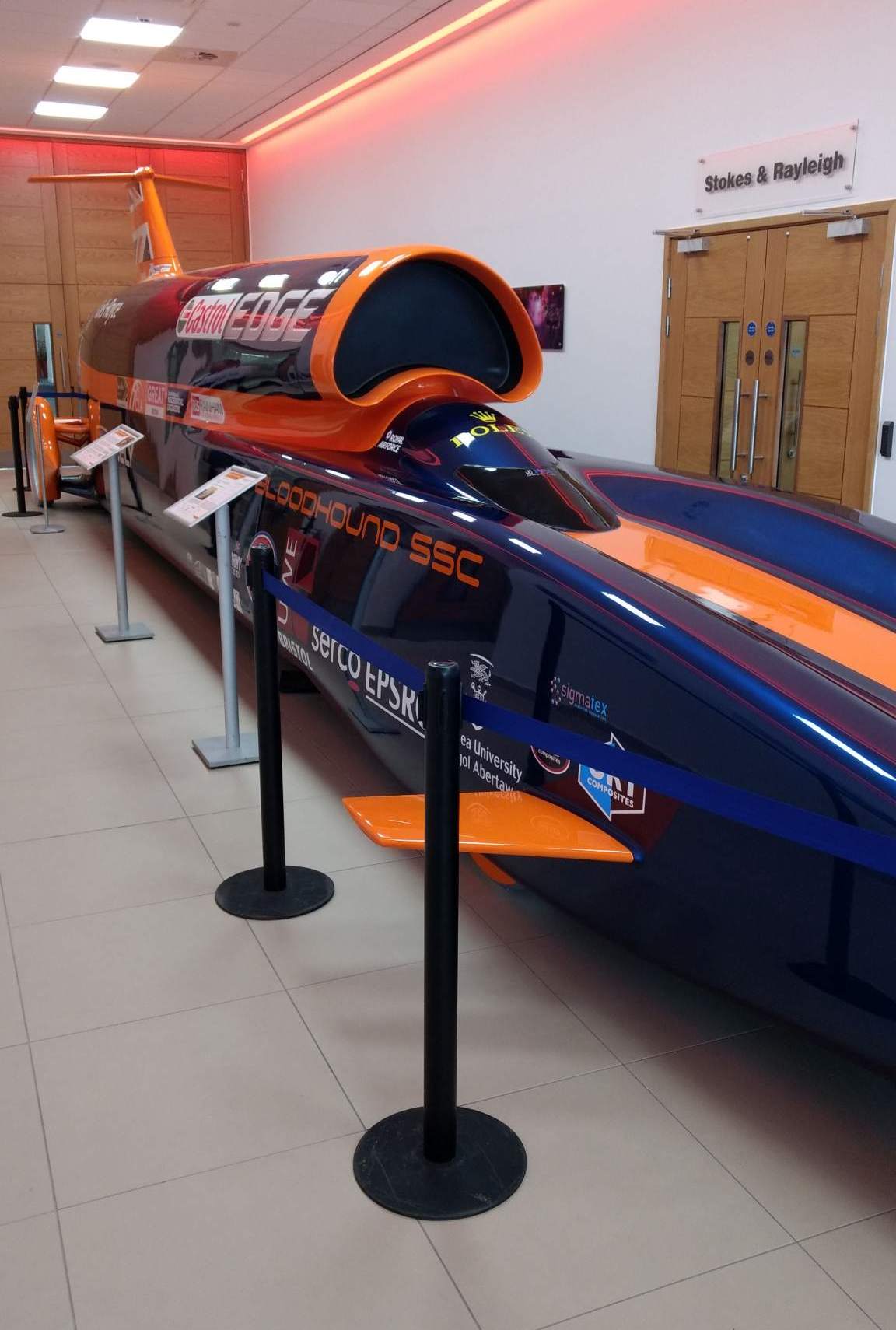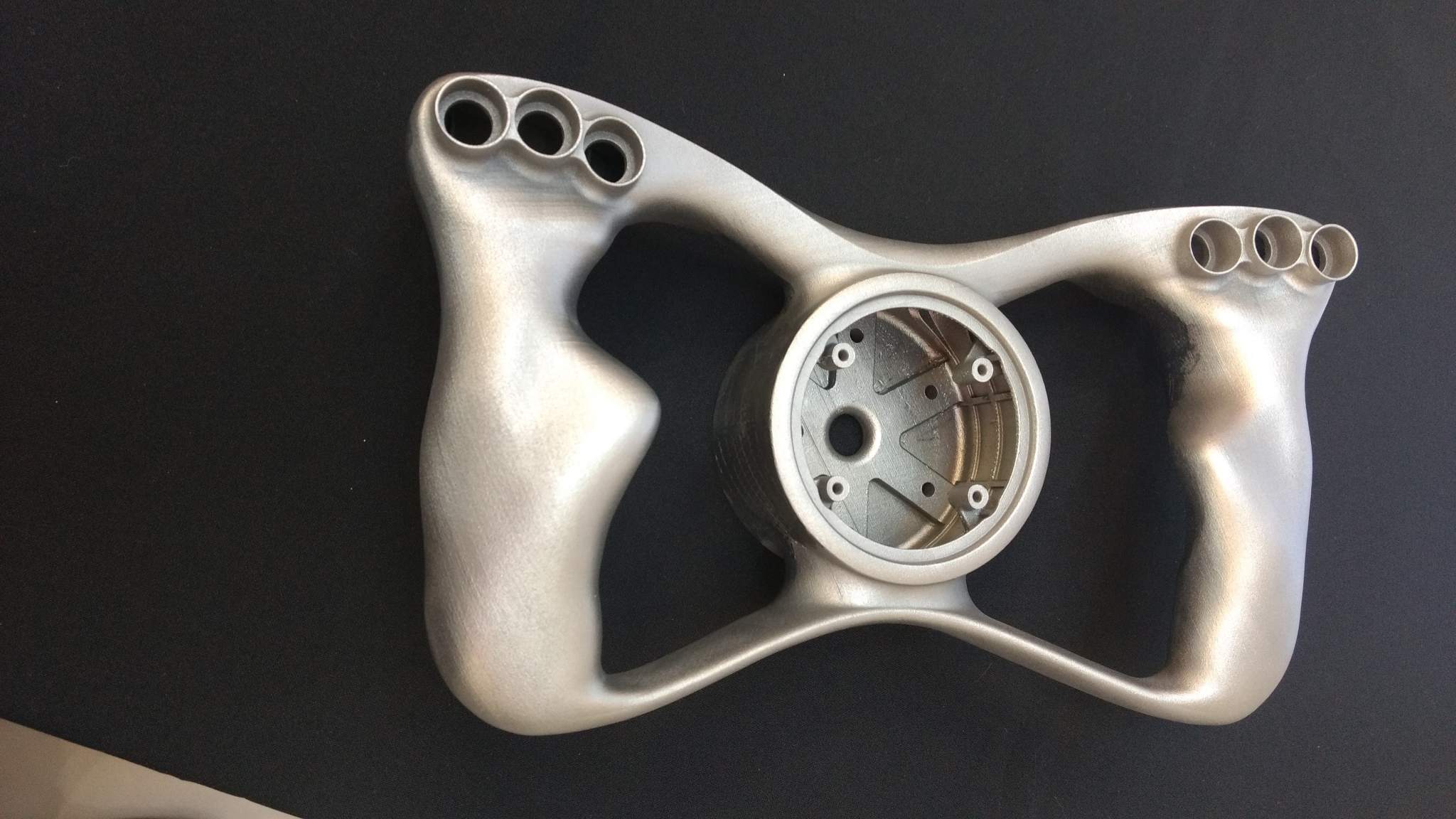This week, British engineering company Renishaw hosted an Open House at their base in Wotton-under-edge, Gloucestershire. At the event, as well as several UK-based automotive companies, was the Bloodhound Supersonic Car.
The team behind the Bloodhound SSC have incorporated 3D printed components produced by Renishaw and this event was an opportunity to showcase the car and the technology behind it. 3D Printing Industry was in attendance to learn more about the car and Renishaw’s additive manufacturing processes.

The 1000mph car
Here at 3D Printing Industry, we have reported on the progress of the Bloodhound SSC as it attempts to break the land-speed record by reaching speeds up to 1000mph. While initially planned to break the record in 2017, the car is now expected to attempt it next year following some delays.
In addition to the car, the Bloodhound team’s Head of Sponsor Liason, Tony Parraman gave a talk on the project and Renishaw’s involvement.

Technological partnership
Parraman has worked on the project since its inception over 8 years ago in 2008, he gave an update on the project’s current status.
The Bloodhound project is now based at their 21,000 warehouse in Avonmouth, Bristol which is not too far away from Renishaw’s Gloucestershire Headquarters. As explained by Parraman, Renishaw has provided Bloodhound with a 3D printed titanium steering wheel and a prototype nose tip. But this, he believes has benefited both companies as Renishaw can learn from the technological partnership. Subjecting the car’s 3D printed parts to speeds of 1000mph may provide some valuable lessons for Renishaw.

Additive manufacturing at Renishaw
In addition to Parraman’s talk, Renishaw’s AM Business Development Manager, Stephen Crownshaw spoke about how the company is adding additive manufacturing to their existing metrology expertise. Renishaw, founded in 1973, only delved into the world of additive manufacturing 6 years ago having acquired British additive manufacturing company MTT in 2011.
Currently, Renishaw is looking at how to optimize their 3D printing processes by adding more lasers to their 3D printers. This will increase the speed of printing and encourage industrial use of additive manufacturing. According to Crownshaw, the company is also integrating their measurement processes to give them a competitive edge over other metal 3D printing companies. Renishaw has a vast amount of experience with measurement hardware and believe this level of precision can be beneficial when combined with 3D printing.

Software innovation
The British company is also looking to advance additive manufacturing technology with their software. As Crownshaw explained, the true benefit of 3D printing is found through designing for additive manufacturing (dfAM). Renishaw are doing this through their QuantAM software which is specifically designed for use with their metal additive processes.
Remember to cast your votes in the 3D Printing Industry Awards.
For the latest metal 3D printing news, sign up to our newsletter and follow us on twitter.
Featured image shows a close-up of the Bloodhound SSC. Photo via Renishaw.


